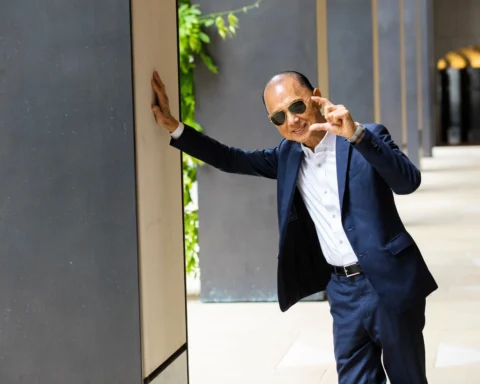The world of luxury fashion is a grand tapestry woven with stories of innovation, creativity, and timeless appeal. Among the brands that have stood the test of time, MCM (Mode Creation Munich) is a singular entity that occupies a distinctive place in the fashion landscape. Renowned for its fusion of German precision and cosmopolitan flair, MCM has grown from a small Munich-based label into a global powerhouse synonymous with high-end craftsmanship and bold, modern design. To understand MCM is to explore the intersection of cultural evolution, luxury fashion’s changing paradigms, and the brand’s own remarkable trajectory.

The Origins of MCM: A Munich Legacy
MCM’s roots can be traced back to 1976, in the heart of Munich, Germany—a city known for its rich cultural heritage, precision engineering, and a burgeoning creative scene. The brand was the brainchild of Michael Cromer, a German visionary who sought to create a label that blended European craftsmanship with contemporary aesthetics.
The 1970s marked a time of rapid change in the global fashion industry, as luxury brands from Europe, particularly Italy and France, began expanding their influence worldwide. Cromer saw an opportunity to inject something uniquely German into this space: a brand that embraced the precise craftsmanship that Germany was famed for, but that also embodied the spirit of cosmopolitan sophistication and jet-set lifestyle.
The Name: Mode Creation Munich
The brand’s name, Mode Creation Munich, encapsulates its essence. “Mode” refers to fashion, “Creation” suggests artistic innovation, and “Munich” situates the brand within a locale known for its historic yet forward-looking spirit. Together, these elements communicate the brand’s philosophy: luxury grounded in European heritage, but with a forward-thinking and artistic approach to design.
Initially, MCM was focused on creating travel accessories—an appropriate starting point given the 1970s’ explosion of international travel. The brand’s early products, including suitcases and handbags, were known for their meticulous attention to detail, sturdy construction, and luxurious materials. MCM soon earned a reputation for being the epitome of high-end luggage and accessories for the well-heeled traveler.

MCM’s Signature Look: The Iconic Cognac Visetos
If there is one design element that defines MCM and its unmistakable aesthetic, it is the brand’s Cognac Visetos, introduced in the 1980s. The Visetos print, a repeating motif of laurel leaves and the brand’s logo, became a defining signature. This emblem, embossed on their premium leather, is a reflection of MCM’s unique take on the classic monogram motif that many luxury brands employ to express their heritage and exclusivity.
The Visetos pattern embodies a sense of timelessness and regality. The laurel leaves represent victory, strength, and triumph, while the interlocking MCM logo echoes a confident sense of luxury. Its signature cognac brown, set against rich gold detailing, became an instant symbol of exclusivity and cosmopolitan chic. The combination of bold yet tasteful design helped the brand quickly appeal to luxury aficionados worldwide.
In many ways, the Cognac Visetos remains synonymous with MCM’s identity. This iconic print not only speaks to the brand’s luxury DNA but also carries with it an aura of timeless sophistication that has withstood the changes in fashion trends over decades.

Craftsmanship and Innovation: A German Aesthetic
MCM’s design philosophy has always emphasized the importance of craftsmanship, a reflection of the German precision-engineering ethos. While fashion houses from Italy and France are known for their heritage in haute couture, MCM distinguished itself by focusing on the durability and functionality of its products without compromising on elegance or luxury.
The brand has consistently sought to strike a balance between tradition and innovation. Early on, MCM mastered the art of creating luxury leather goods that were as robust as they were aesthetically appealing. The careful selection of leathers, meticulous hand-stitching, and the use of the highest-quality materials made MCM products instantly recognizable for their attention to detail. Yet, the brand was never content with being just another purveyor of high-end leather goods.
From its inception, MCM emphasized technological advancements. The brand was among the first to adopt innovative manufacturing techniques that allowed for greater durability and longevity, especially in their travel accessories. The use of lightweight yet durable materials and the incorporation of RFID technology into its luggage highlighted MCM’s commitment to modernity and functionality.
Balancing Heritage and Modernity
While MCM’s early years were defined by its commitment to heritage craftsmanship, the brand has always been rooted in a forward-thinking ethos. In the late 1980s and early 1990s, MCM’s designs began to reflect a more adventurous spirit, embracing bold colors, eclectic patterns, and experimental shapes. This pivot was emblematic of the brand’s ability to reinvent itself to remain relevant to changing times while maintaining its luxury positioning.
During this period, MCM attracted a new type of customer: the young, fashion-forward urbanites who were increasingly becoming a part of the luxury consumer market. The brand was often seen on celebrities and in the pages of high-fashion editorials, a testament to its growing cultural cachet.

The Fall and Rebirth of MCM: A New Millennium
By the late 1990s, MCM had reached a peak, but success came with challenges. The brand over-expanded, and financial difficulties began to emerge. By the early 2000s, MCM was teetering on the brink of bankruptcy, a cautionary tale of rapid growth without adequate infrastructure to support it.
However, the story of MCM’s revival is one of resilience and strategic vision. In 2005, the brand was acquired by Sungjoo Group, a South Korean conglomerate with deep roots in luxury retail. Under the leadership of Sungjoo Kim, the company’s chairwoman and a trailblazing figure in the luxury sector, MCM began a remarkable transformation.
Kim understood that the future of luxury would be driven by younger consumers who sought brands that were global in perspective but still maintained their heritage. She repositioned MCM as a brand that appealed to a new generation of digitally savvy, fashion-conscious individuals, while maintaining its core principles of quality craftsmanship and bold design.
This revival was marked by several key decisions. Firstly, MCM expanded its presence in Asia, particularly in South Korea and China, where the appetite for luxury goods was growing exponentially. The brand became a favorite among the region’s burgeoning middle and upper classes. Secondly, MCM shifted its focus from travel goods to lifestyle fashion, with an expanded offering that included apparel, accessories, and footwear.

A Global Brand with Urban Appeal
Under the stewardship of Sungjoo Kim, MCM underwent a renaissance that not only restored its former glory but also catapulted it into the forefront of global fashion. Central to this revival was MCM’s embrace of streetwear aesthetics—a fusion of high fashion and urban culture.
The mid-2000s to the 2010s saw streetwear grow from a subculture into a mainstream force in fashion, with luxury brands like Louis Vuitton, Gucci, and Balenciaga tapping into the energy of this trend. MCM, too, recognized the cultural moment and became a key player in this shift. Its leather backpacks, adorned with the iconic Visetos pattern, became a favorite of the street-style set. MCM’s backpacks were not just a functional accessory; they were a symbol of luxury’s intersection with urban culture, beloved by rappers, athletes, and influencers alike.
By aligning itself with the worlds of music, art, and street culture, MCM managed to capture the attention of a new generation of consumers. Celebrities such as Beyoncé, Rihanna, and Kanye West were often spotted wearing MCM, further cementing its status as a brand that embodied cool, modern luxury.
Collaborations and Creative Partnerships
One of the most effective ways that MCM has continued to remain relevant in an ever-changing fashion landscape is through its collaborations with artists, designers, and creatives. These partnerships have allowed MCM to explore new creative territories while keeping its heritage intact.
For instance, MCM has collaborated with German contemporary artist Tobias Rehberger to create limited-edition collections that blend art and fashion. The brand has also worked with influential fashion designers like Christopher Raeburn, who brought a sustainable and innovative approach to MCM’s designs.
In another notable collaboration, MCM partnered with the iconic German sportswear brand Puma to create a line that fused MCM’s luxury aesthetics with Puma’s athletic heritage. This collaboration, launched in 2018, was a perfect encapsulation of how MCM has managed to bridge the worlds of luxury, sport, and streetwear, appealing to a broad spectrum of fashion consumers.
These collaborations not only introduce MCM to new audiences but also allow the brand to experiment with different design sensibilities, keeping it fresh and dynamic.

MCM Today: A Brand for the Global Citizen
Today, MCM stands as a global brand with a strong presence in over 40 countries and flagship stores in major fashion capitals such as New York, Paris, Seoul, and Tokyo. What sets MCM apart is its ability to navigate the delicate balance between staying true to its roots while evolving with the times.
The brand’s modern identity is built on a foundation of inclusivity, global culture, and a keen awareness of the digital age. MCM embraces diversity in its campaigns, showcasing a wide range of cultural backgrounds and styles that reflect the world of the modern luxury consumer. This global outlook resonates particularly well with the millennial and Gen Z consumers who increasingly demand that brands reflect the values of inclusivity and cultural fluidity.
Sustainability and the Future
In an era where sustainability is becoming an essential pillar of luxury, MCM has also committed to responsible practices. The brand has invested in eco-friendly materials, sustainable manufacturing processes, and transparency throughout its supply chain. This shift is not only in response to consumer demand but also part of MCM’s broader vision of luxury that is both modern and mindful.
The use of sustainable leathers, vegan options, and ethical production methods positions MCM as a brand that understands the environmental challenges of the future and is taking active steps to address them.


The Spirit of MCM
MCM’s story is one of reinvention and resilience, of a brand that has never been afraid to evolve and adapt. From its origins in Munich’s creative milieu to its position as a global luxury powerhouse, MCM has remained committed to craftsmanship, innovation, and a bold aesthetic vision.
What makes MCM unique is its ability to embody the zeitgeist while maintaining a sense of timelessness. Whether it’s the brand’s iconic Cognac Visetos print, its high-profile collaborations, or its embrace of streetwear and global culture, MCM continues to reflect the ever-changing face of luxury in the 21st century.
At its core, MCM is more than just a fashion brand; it is a reflection of a lifestyle that celebrates individuality, craftsmanship, and the spirit of global connectivity. As MCM looks to the future, it remains a brand that is not only shaped by its rich heritage but also driven by the possibilities of tomorrow.






